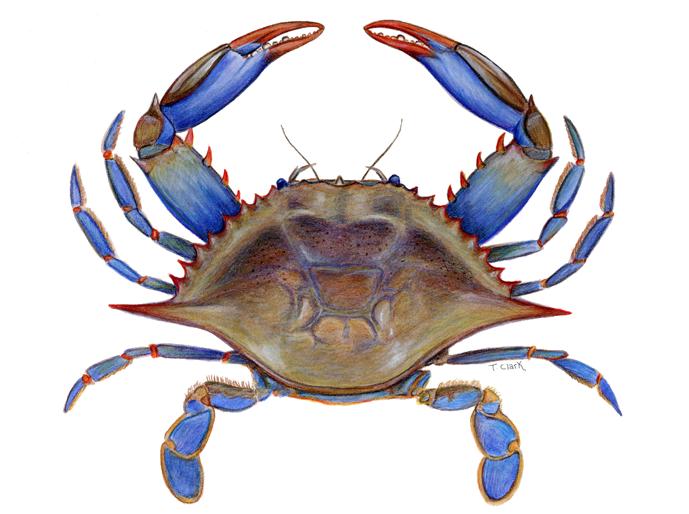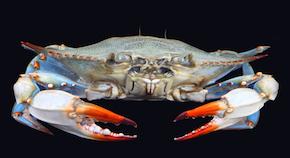The third lecture-discussion in the Winter Weekend series presented by Phillips Wharf Environmental Center (PWEC) looks at the Chesapeake Bay from a unique perspective. On Saturday evening, March 8th, at 6:30 pm, Dr. Eric Schott of the University of Maryland Center for Environmental Science will look at the health of the Bay through the stalk-mounted eyes of its leading citizen, the blue crab.
Why, you might ask, is the blue crab the leading citizen of the Chesapeake Bay? Consider this: It is the foundation of the most valuable fishery in the Chesapeake Bay, and provides a livelihood for more than 5,000 fishermen Baywide.
 Dr. Schott will explore several questions central to the health of both the Bay and the blue crab:
Dr. Schott will explore several questions central to the health of both the Bay and the blue crab:
-How does the health of the Bay affect blue crabs?
-Why does the size of the crab population change so much from year to year?
-Is it true that only one blue crab in a million lives to adulthood?
-Why are there more female crabs in Virginia’s waters than Maryland’s?
-Who is eating it besides humans? (HINT: Everybody likes blue crab!)
-Where does it live? (South America and Europe!)
-Why is its habitat expanding?
-Who are its cousins?
-What humans can do to preserve the blue crab, and to ensure that future harvests are plentiful.
To understand how and why crab numbers change from year to year, it is first necessary to understand the basic life cycle of blue crab. Each crab you see in Tilghman has walked or swum more than 150 miles, and might have journeyed many hundreds of miles. These facts are factored into rational Baywide regulations for the blue crab fishery.
The program on March 8 begins at 6:30 p.m. at Harrison’s Chesapeake House; Tilghman; admission is free. Come at 5:00 for a leisurely dinner beforehand. For reservations, call Harrison’s at 410-886-2121.
..



Write a Letter to the Editor on this Article
We encourage readers to offer their point of view on this article by submitting the following form. Editing is sometimes necessary and is done at the discretion of the editorial staff.